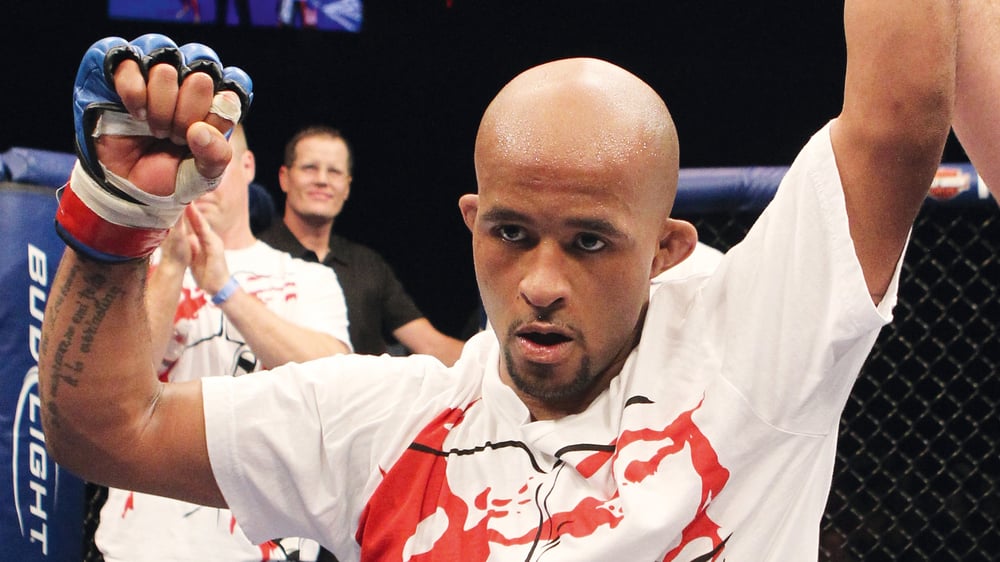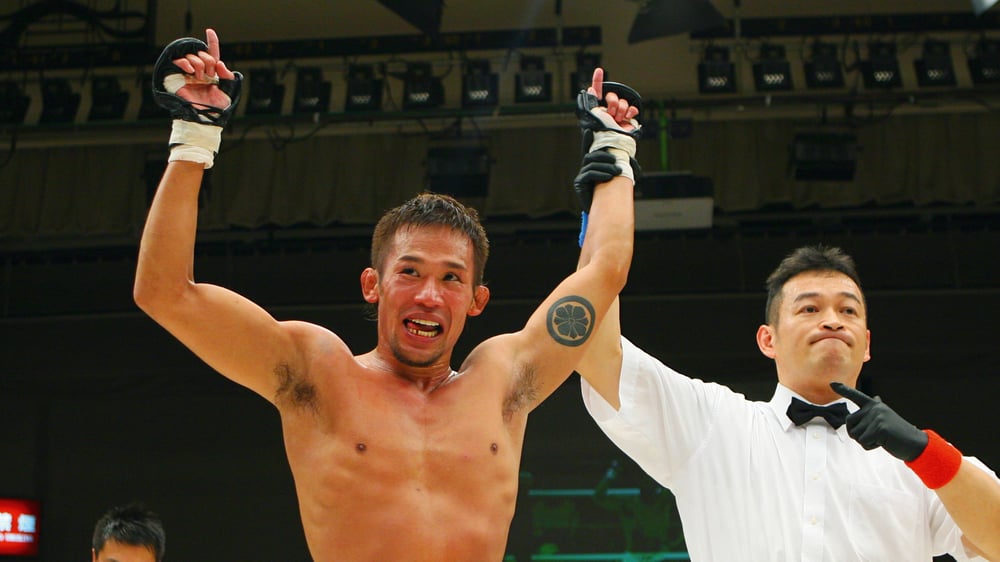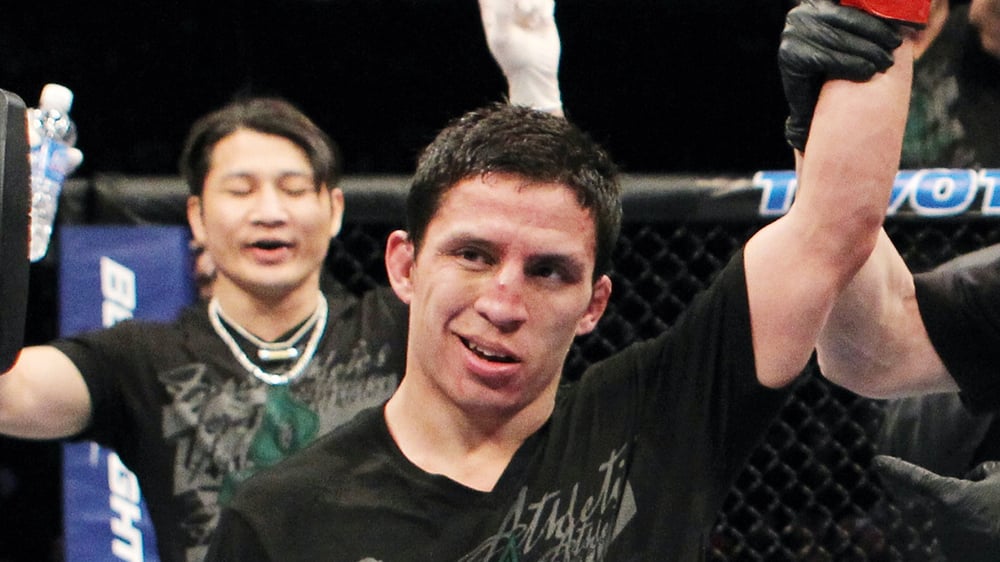
Issue 086
March 2012
First, FO analyst Andrew Garvey takes a look at the state of play: what are the career implications for the combatants? Where are they coming from, and what will victory or defeat hold? Next, our technical advisor Pete Irving breaks down the athletic considerations.
UFC 144
February 26th, Saitama, Japan
Ryan Bader vs. Quinton Jackson
4:7
Ryan Bader placed fourth and seventh respectively at the 2004 and 2006 NCAA Division 1 Wrestling Championships.
10
Wrestling for Arizona State, Bader was a three-time PAC-10 champion, in 2003, 2004 and 2006.
9th
‘Rampage’ Jackson ranks ninth amongst UFC fighters for best takedown defense, having stuffed 82.4% of opponents’ shots.
357
‘Rampage’ has only ever suffered a strike-based loss on Japanese soil. His last from the soccer kicks of ‘Shogun’ Rua on April 23rd, 2005, or 357 weeks from fight night.
76.1%
Ryan Bader’s UFC opponents have missed 76.1% of the significant strikes they’ve thrown his direction, ranking Bader second in the UFC for significant strike defense.
THE BIGGER PICTURE
Former UFC light heavyweight champion and perennial contender Quinton ‘Rampage’ Jackson (32-9) apparently lobbied hard for a spot on UFC 144 – the first appearance of the Ultimate Fighting Championship in Japan since UFC 29 in December 2000. That event, the final one of the pre-Zuffa era, played to a live crowd of less than 1,500 fans. This one, in the plush Saitama Super Arena will likely see a live crowd of about 15,000 witness Jackson’s ninth career fight in the building. ‘Rampage’ has plenty of history in Saitama as a major star with the once-mighty Pride FC. He lost his promotional debut there to Kazushi Sakuraba and his second fight with Wanderlei Silva, for the Pride middleweight title. He also picked up wins over Murilo Bustamante, Ikuhisa Minowa, Ricardo Arona, Murilo Rua, Hirotaka Yokoi and Dong Sik Yoon and should be favored to add Bader (13-2) to his list of Saitama victims. Strong and athletic, TUF 8 winner and two-time All-American wrestler Bader used to be widely cited as a future championship prospect. Finishing Keith Jardine in the third and outscoring Antonio Rogerio Nogueira, albeit in pedestrian fashion, seemed to confirm he was a fighter with a very bright future. Then things went badly wrong as he dropped two straight, first to Jon Jones, although there’s no surprise or shame there, and shockingly, to Tito Ortiz. Both men did much to quell the hype surrounding Bader.
Seemingly struggling to stay motivated for fights and likely out of the running for a title shot as long as Jones wears the belt, such was his dismantling, Jackson is a somewhat directionless fighter these days, but still a very dangerous one. What Bader does well – applying his wrestling and boxing skills to MMA – Jackson does better. Yes, Jackson is predictable and, against Rashad Evans, Lyoto Machida, Matt Hamill and Jon Jones, he sometimes looked sluggish, but Jackson beat Hamill by a country mile, Machida by inches and in losing to Evans and Jones, he went down to two of the divison’s genuinely elite, and fastest, fighters. Bader is hardly the speediest, most innovative competitor out there, either. Jones choked him out to end his unbeaten run and then, when given a chance for redemption against Ortiz, Bader was dropped and guillotined in less than two minutes. He bounced back impressively, smashing tough veteran Jason Brilz to defeat in 77 seconds but Jackson, especially a Jackson motivated for his big Japanese return, is just too good for Bader.
TECHNICAL BREAKDOWN
This match could almost be characterized as a classic ‘striker vs grappler,’ with Rampage preferring to box consistently, regardless of the opposition; and Bader, the wrestler, with his striking style yet to mature to a level comparable to his grappling skill. It’s almost easy to forget that Rampage began his MMA career as a pure wrestler, learning to strike as he went. Since Rampage’s arrival in the UFC, virtually none of the high-amplitude slams that epitomized his Pride performances have been seen. Even then, though, marked differences between the two wrestlers’ styles exist. Rampage’s trademark was always the pick-up and slam, whereas Bader typically ducks under punches and drives his man down to the mat. Neither competitor is particularly inclined towards hunting for submissions, and equally neither man launches kicks often, both primarily preferring to box. An outstanding power puncher, Rampage truly punches his weight, hitting from the hip and slipping and rolling in a fashion of boxing perfectly adapted for MMA. Bader’s striking lacks the finesse and insight of Rampage’s sharp combination punching, but clearly does not lack power – if he connects, he gets results, with half of his wins coming via (T)KO to punches (and one submission to punches, in his pre-UFC days). Heavily right-hand dominant, it is normally the big bomb, clubbing rights that garner effects, both on the mat, and standing, where he sets them up with a pawing, range-finding left. To write off his left hand as ineffectual would however be a mistake for Rampage, as it would be hard to discount the power of the left uppercut that put Jardine out cold. Neither Bader’s striking nor his wrestling are particularly pretty to behold, but they get the job done. As Matt Serra once astutely pointed out, ‘you don’t have to be a better striker than someone to knock them out in MMA.’

UFC on FX 2,
March 3rd, Sydney, Australia
Ian McCall vs. Demetrious Johnson
2
The only two losses of Ian McCall’s career, to Dominick Cruz and Charlie Valencia, came fighting 10lb above flyweight in the WEC’s bantamweight division.
1.3
McCall only has 13 fights in his 10-year career. That’s an average of just 1.3 bouts every 12 months. Demetrius Johnson has managed 11 matchups in five years.
1
Demetrious Johnson has only fully attempted one submission in his six-fight UFC and WEC career.
4
Between the WEC and UFC, the four times Johnson has scored as many or more takedowns than his opponent he has picked up the ‘W’.
75%
Demetrious Johnson has won 75% of the four title fights he’s competed in. He’s held titles in Ax FC, Genesis MMA and Rumble on the Ridge, while the UFC 135lb title eluded him.

THE BIGGER PICTURE
Adding the 125lb division to matchmaker Sean Shelby’s empire (he essentially handles everything below lightweight) is great news for fans of fast-paced fights. And the UFC is jumping straight to the title with a four-man tournament pitting undersized UFC bantamweights dropping down against flyweight champions from smaller promotions. One of the two fastest fighters with a UFC contract, ‘Mighty Mouse’ (9-2) finds his natural weight class after a gutsy bantamweight title challenge against the other, Dominick Cruz, last October. Johnson was soundly beaten, losing an unarguable decision, but won legions of new fans with his sheer determination and crowd-pleasing style. The 25-year-old, who only escaped his forklift truck driving day job to train full-time a couple of months before the Cruz fight, owns impressive wins, mostly thanks to his quality wrestling and great speed, over Miguel Torres and former Japanese superstar Norifumi ‘Kid’ Yamamoto. Having achieved so much while usually greatly outweighed, he should make a real impact at flyweight. His opponent, 27-year-old UFC newcomer McCall (11-2) is California’s Tachi Palace Fights flyweight champion and riding a four-fight win streak that includes a decision victory over highly-rated Brazilian Jussier Da Silva. Like Johnson, he’s also lost to Cruz, being dominated for three rounds. His only other defeat, by guillotine choke, was against the tough, but inconsistent Charlie Valencia in 2007. A good striker, ‘Uncle Creepy’ (yes, that really is his nickname) will be a very tough opponent but he may struggle with Johnson’s relentless attacking style.
TECHNICAL BREAKDOWN
A tight matchup on paper, both men have turned out a mixed bag of subs, (T)KOs and decision wins over their comparable careers. Equally, both share in a decision loss to Dominick Cruz. Light on his toes, McCall bounds in and out, side to side. He carries his hands quite low, and flashes out a peppering jab with the back of the fist, but when he does settle in and get his range, his combinations are sharp and effective, following up with an excellent double-leg attack, choosing his moments well when he has his man on the back foot. From top position McCall thrives, hammering away, throwing the legs by and transitioning from side to mount to back, punching away all the while. Powerful and compact, Johnson will lose out on range against McCall, but is no stranger to that scenario. ‘Mighty Mouse’ compensates for a short range with constant forward pressure, battling to stay in the pocket. If any criticism can be leveled at his style, it’s only that he has on occasion been overzealous in driving forward, like when he was thrown by Damacio Page. Like McCall, he works well from top with aggressive ground ‘n’ pound, and the outcome of this bout may well be decided on who is able to establish top position.

UFC on FX 2,
March 3rd, Sydney, Australia
Yasuhiro Urushitani vs. Joseph Benavidez
79%
A massive 79% of Yasuhiro Urushitani’s 29 fights have gone to the judges. Of his 19 wins, he has only finished five.
0:1
Urushitani has never been knocked out in his 11-year career and has been submitted only once, by guillotine.
23
In his last 10 bouts, Benavidez has hit just 23% of his 44 attempted takedowns.
1
Benavidez has only lost to one man, Dominick Cruz. The UFC bantamweight belt holder is responsible for Benavidez’s two career losses, both by decision, one in 2009, the other in 2010.
1039
Joseph Benavidez has let 1039* strikes fly in his last 10 fights, but connected with just 325.

THE BIGGER PICTURE
In the other flyweight semi-final, Urijah Faber’s teammate Joseph Benavidez (15-2) has picked up three solid wins since going the full five rounds with Dominick Cruz (his second loss to the elusive 135lb’er) for the WEC bantamweight crown in August 2010. Particularly dangerous with chokes, as demonstrated in his wins over Miguel Torres and Wagnney Fabiano, Benavidez is an energetic, superbly conditioned fighter capable of outworking just about anyone. The only man in the tournament without a loss to Cruz (he’s never fought him) is Japan’s top flyweight, Shooto champion Yasuhiro Urushitani (19-4-6). A good counter-striker with slick mat skills, the Japanese veteran has only once fought on foreign soil – in South Korea. At 35, he’s almost ancient for this weight class and, as with many other Shooto fighters, his record is littered with rematches, meaning he’s actually faced just 22 men in his 29 fights. He does have experience in the cage but he will struggle to deal with Benavidez’s aggression, pace and wrestling. Expect the American to win this one, handily.
TECHNICAL BREAKDOWN
Southpaw Urushitani holds a long boxing stance and is constantly light on his feet. Not averse to a little showboating, Urushitani sometimes appears to be doing a lot of work, shifting his feet, dropping his lead right hand and flicking out front kicks, whilst in reality fails to engage meaningfully, preferring to keep the range open. A typical product of the Shooto system, Urushitani lacks real stopping power, as is evident in his record, with 14 of his 19 wins coming from the judges’ favor. Whilst it is hard to fault Urushitani’s submission defense, having been stopped only once in his 29-fight pro career, and notably surviving some close attempts by Brazilian submission ace Robson Moura, it is obvious where he likes the fight to take place – on the feet, at range.
Essentially the polar opposite of his Japanese rival in every respect, Benavidez is short and heavily muscled, in contrast to the tall lean Urushitani. Where Urushitani stands off and looks to sprawl, Benavidez pressures in, with the clubbing, clobbering wrestler’s punches and a slick variety of powerful takedowns. In Urushitani we have a decision taker, Benavidez on the other hand is an aggressive finisher, pounding away or employing the crushing guillotine that is so characteristic of a Team Alpha Male fighter.
...









